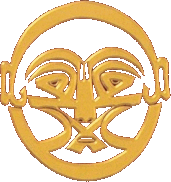Şahkulu
Şahkulu[lower-alpha 1] also known as Shah-Qoli Baba,[2][4] Shahqoli Baba, or Karabıyıkoğlu (died July 2, 1511), was the leader of the pro-Shia and pro-Safavid uprising in Anatolia – the Şahkulu Rebellion – directed against the Ottoman Empire in 1511. He was viewed as a Messiah and Prophet by his followers.[5] His death in battle signified the end of the uprising. He is buried in Amasya.
Biography
Şahkulu was a member of the Turkmen Tekkelu tribe.[2] Being inspired by Safavid missionaries, the Turkmens living on Ottoman soil, "as far west as Konya", were mobilized in a "fervent messianic movement", led by Şahkulu.[2] Şahkulu and his followers tried to "replicate" the same type of revolt led by Ismail I several years earlier, "perhaps in anticipation of a union with the Safavids".[2]
Şahkulu was killed in 1511, and the pro-Safavid movement was "halted temporarily".[2] But the anxiety of the Ottomans, in relation to "losing much of their Asian possessions was not eased".[2] Nor did the hatred of the Ottomans for Ismail I cease to exist, even though Ismail apologized for the atrocities caused by the Turkmens and "disowned" Şahkulu.[2] As the possibility existed of a "mass Turkmen exodus into the Safavid realm", Bayezid II sought to establish good relations with Ismail, "at least on the surface, and welcomed Ismail's gestures to establish good neighborly relations".[2] In letters sent to Ismail, Bayezid II addressed Ismail as "heir to the kingdom of Kaykhosrow – the legendary great king of the Shahnameh – and to Dara (Darius) of the ancient Persian Empire".[2] Abbas Amanat adds: "He further advised Ismail to behave royally, preserve his precious and strategically vital kingdom with justice and equanimity, end forced conversions, and leave in peace with his neighbors".[2]
Bayezid II had faced a revolt from his own son Selim (who succeeded as Selim I), in the final years of his rule.[2] Unlike his father, Selim, then still a prince, disliked his father's appeasement policies vis-a-vis the Safavids.[2] When Selim I thus ascended the throne in 1512, things changed drastically.[2] Tensions rose, which eventually led to the Battle of Chaldiran in 1514.
In popular culture
A fictionalized version of Şahkulu appears in the 2011 video game Assassin's Creed: Revelations, where he is called Shahkulu and serves as an antagonist.[6]
He appeared in the board game Assassin's Creed: Arena with Anacletos, Odai Dunqas and Oksana Razin.[7] It was launched on 26 February, 2014.[8]
References
- Gibb 1954, p. 128.
- Amanat 2017, p. 52.
- Matthee 1999, p. 19.
- Jafarian 2012, p. 65.
- Finkel, Caroline (July 19, 2012). Osman's Dream: The Story of the Ottoman Empire 1300–1923. Hachette UK. p. 21. ISBN 9781848547858.
- Converse, Cris (February 6, 2016). "Sequence 7 - Underworld". Assassin’s Creed Revelations Game Guide. Booksmango. p. 29. ISBN 9781633235007.
- Delgado, Jesús (February 16, 2014). "Assassin's Creed Arena, el nuevo juego de tablero de AC". Hobby Consolas (in Spanish). Retrieved December 10, 2017.
- Makuch, Eddie (February 14, 2014). "Now there's an Assassin's Creed board game". GameSpot. Retrieved December 10, 2017.
Sources
- Amanat, Abbas (2017). Iran: A Modern History. Yale University Press. ISBN 978-0300231465.CS1 maint: ref=harv (link)
- Bowden, Oliver (2011). Assassin's Creed: Revelations. Penguin UK. p. 52. ISBN 9780141966724.CS1 maint: ref=harv (link)
- Gibb, H.A.R., ed. (1954). The Encyclopaedia of Islam. Brill Archive. ISBN 978-9004060562.CS1 maint: ref=harv (link)
- Jafarian, Rasool (2012). "The Political Relations of Shah Esma'il I with the Mamluk Government (1501–16/907–22)". In Floor, Willem; Herzig, Edmund (eds.). Iran and the World in the Safavid Age. I.B. Tauris. ISBN 978-1780769905.CS1 maint: ref=harv (link)
- Matthee, Rudolph P. (1999). The Politics of Trade in Safavid Iran: Silk for Silver, 1600–1730. Cambridge: Cambridge University Press. p. 120. ISBN 978-0-521-64131-9.CS1 maint: ref=harv (link)
